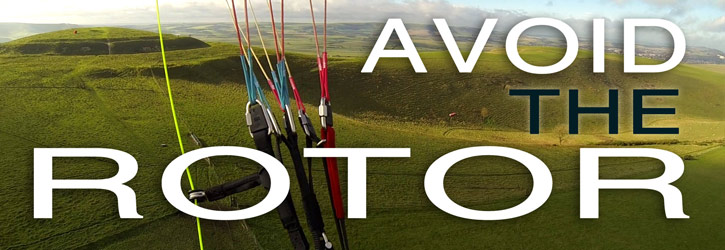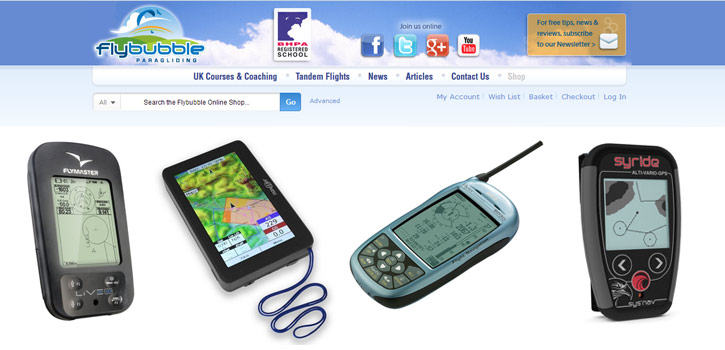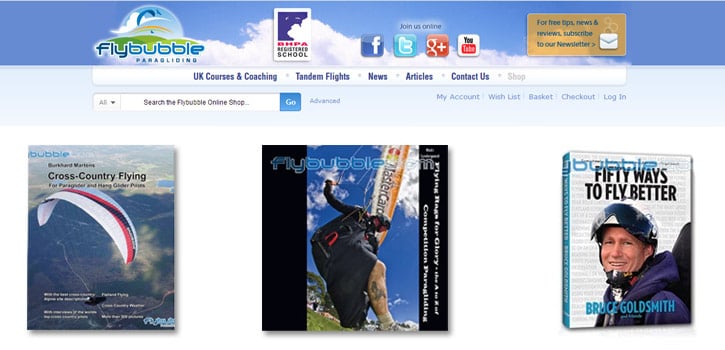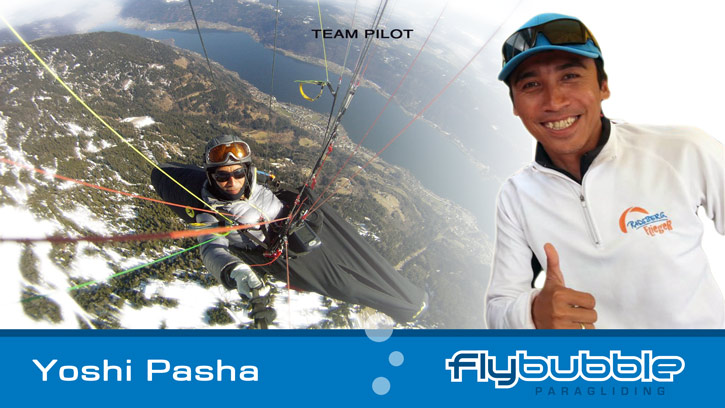
Many paraglider pilots are interested in cross country flying, from those who have just received their XC licence (in the UK, the BHPA Pilot Rating) to experienced pilots with a desire to explore. After some time doing XC, pilots often decide to enter a competition to test themselves, to fly a new site with support or just to try something new. This article aims to helps you get the edge in your first competition, based on my experience.
[Ed: After a season of competition flying in Europe, Yoshi became the Austrian Competition League Newcomer Champion 2014]
A. Know your skills
There are essential skills you need to be safe in a competition: Launching, Assessing The Wind, Climbing in Thermals, Soaring, and Active Flying.
Many flying skills are developed by airtime, others are best gained through instructions or advice from senior pilots. You can also increase your knowledge by watching videos, reading textbooks and analysing this with the help of experts.
Launching
It is essential to have a good launch when in a comp. First, the time-window for doing it is relative short – usually around an hour or two. Second, there are seldom any assistants, unless it is a big (and pampered) comp. So, being self-dependent is advantageous on the crowded launch site. Third, failed launch attempts are exhausting and nerve-wracking. You could easily lose the focus required to fly and drain your stamina too early, before the fight even begins!
So you need to have a clean fast launch. If you can launch early, it is logical that you will have more time to build altitude before the start. In most comps, the pilot with the most height early on has the advantage through the day.
Here are some good study materials that will help with your launch skills.
1. Strong Wind Launching (Simple Depower) by Flybubble
2. Learn how to use the best launch stance by Flybubble
3. How to launch in a crosswind by Flybubble
4. Master PPG 1: Advanced Ground Handling DVD by Jeff Goin
Assessing the wind
You need to interpret the wind speed and direction during the whole day so you can make good decisions. By accurately assessing the wind, you can predict the movement of thermals, the presence of lift and turbulence and identify lee areas with rotor.
This might sound simple when one is still on the launch site or in the landing zone. But when you are high in the air, after some time and distance, the wind speed and direction are somehow not so simple to identify. So you need to know how the winds move through the area you are flying in and combine that with the current weather forecast.
Flying in a mountain area is definitely different to flying in flatlands, and it needs a different approach. A more considered approach is needed in a more complex area. For example, there are mountains with strong valley-winds affected by a flatland nearby (Kössen, Austria), there are mountains combined with other higher mountains which block the meteo-wind, there are flatlands affected by the sea-breeze, and so on.
You can gather good knowledge about the wind and weather from local pilots, and add more from study materials from competent persons or institutions.
Here is a short list from many sources already out there.
1. Fortune Favours the Prepared Mind, by Honza Rejmanek, CrossCountry Mag. Ed. 149.
2. How to Avoid the Rotor by Flybubble
3. Flying the Sea Breeze Front by Flybubble
Climbing in thermals
This skill is the heart of all XC flying. There are many different theories about thermaling and its use within a comp. Armin Harich, a German Open Distance record holder with EN B glider, believes that to fly fast you must be high. Chrigel Maurer, a three times X-Alps winner, advises flying straight whenever possible because when circling in thermals you’re racing the wrong way half the time! Kirsty Cameron, UK record holder, mentions that you should thermal only as high as you need to. But my favourite line is by Russel Ogden, PWC pilot and Ozone test-pilot, “Climbing is where you gain or lose time, so concentrate on your climbing skills. The better you are at the climbing, the more efficient you will be.”
Here are some inspiring ideas:
1. How to Find the First Thermal by Flybubble
2. Getting Away From a Small Hill on a Paraglider by Flybubble
3. The 5 Methods for Thermaling by Pat Dower (PDF download)
4. Flying Your First Competition, a chapter in Fifty Ways to Fly Better by Bruce Goldsmith
Soaring
This can really build your skills. Working light lift may help you when flying in the mountains and waiting for the thermal to kick off. Flying in windy conditions helps to increase your handling. Flying in traffic helps to build your confidence in flying with others.
Many times in comps, the difference between pilots is only a matter of meters. The ability to survive the task is also a major factor for amassing points: when the weather worsens or you make little wrong decisions that take you out of the dizzy heights, your ability to soar will mean you stay in the game.
Check out:
1. Soaring Up A Cliff Face by Pal Takats
2. Soaring in the Dolomites by gueneps
3. Questions You Didn't Think to Ask, but Wished You Knew the Answers to! by Chris Jones

Active flying
Your good wind-reading, climbing and soaring abilities would not be advantages if you don’t have good active flying skills that keep you in command of your glider. “Power is nothing without control,” says German champion and GIN test-pilot Torsten Siegel. You must be comfortable with the current glider you take to the comp. You should know how to react in turbulence, be happy to fly it fast, and confident flying it. Competitive flying has more risks; it’s your job to minimise them.
Here are some good tutorials:
1. How to Improve your Active Flying by Flybubble
2. How to Improve your Active Flying part 2 by Flybubble
If you feel you meet all the minimum skill levels, you are about 75% ready for your first comp. Continue to Part B: Know Your Instruments.
B. Know your instruments
Everyone who flies XC is familiar with flying instruments such as a variometer, compass, and GPS. All of these gadgets are helpful devices for us to fly better, plan and record our flights.
The main difference between free-flying and a comp is the task. It is a route that one must follow, set daily by a Task Committee after much head-scratching, beard-pulling and consulting with the Oracle (the weather forecasts). Knowledge about entering (and following) a task is a necessary skill for a comp pilot. Further details on setting up a task can be found on the FAI website, and in flight instrument manuals (links below).
There are some crucial things one must understand about GPS units. Firstly, not all GPSs have an option to set a competition route (e.g. Garmin series). Only a few GPSs that are designed for competitions have this (Bräuniger/Flytec, Naviter, C-Pilot). Also, with the advance of technology, there are many apps that can be quite reliable (XCtrack, Flyskyhi). Most paragliders in a comp carry more than one GPS, one is the primary instrument and the other is a back-up.
You must choose which one to use, then read the manual and learn carefully how to set waypoints, takeoff window, start time, and start type. At first, it might be a little confusing for some of us (at least, for me). But with more study and a few simulations in the air, I am sure it will become clear very fast. Of course, asking other pilots could also accelerate one's learning process.
Last but not least, get it ready the night before the comp. Charge the batteries, check if it is working.
Some good GPS information:
GPS and Competition Information by Mark Graham
FAI Documents about Paragliding Competitions
Also check out Flybubble's range of flight instruments suited for competitions (check for specific functionality).
Right, you’re about 95% ready for the comp … read on!
C. Know flying tactics
Understanding flying tactics will enhance your performance in the tasks. Later on, as you gain more competition airtime, you should expand and explore the flying tactics more.
Logic Targets. It is almost impossible to win your first competition. So, learning and making friends are logical goals at the beginning. Try to absorb knowledge from the surrounding pilots and aim to make your performance improve each day. Consider the local topography, previous tracklogs in the area, and any flying advice from locals. Set a realistic target and raise the target as you develop. In my case, I aimed just to fly and learn at the very first comp. After revising targets in couple of comps, my current goal is to be more consistent in every task.
Gaggles. The most unique feature in a comp is the gaggle, where many pilots cluster into one thermal and circle in very close proximity to each other. A gaggle always forms at the start of every task and splits into smaller gaggles as the task progresses. Don’t get intimidated by flying in the gaggles, you need to stay in the best lift to gain height before the start. On the other hand, be sure to follow the rules of the air, flying with consideration for yourself and others. Fly directly behind pilots at your altitude, follow at a safe distance and never fly into the centre of any established gaggles. This gaggle-flying takes time to learn, but it is worth persisting, because gaggle-flying is beneficial for finding climbs, staying in the air, and getting to the goal.
Flying Mode. I put this section at the very end since it changes according to the current situation and your skill set. After some time, I learnt that there are three type of flying in the comp.
First, the XC mode: flying the Task at your own pace and using your own skills to stay in the air as far as possible. The same type of flying of what we do in the local sites, but with the addition of waypoints to follow. It’s often slow and conservative, taking every climb to the top, and drifting at best glide. This is most likely at your first comp.
Second, the Gaggle Flying mode: fly with the gaggle(s). By the time the task starts, there will be smaller gaggles consisting of pilots of usually similar level. You have the advantage of other pilots showing thermals. You will need to start applying speedbar more often to keep the pace with others in the gaggle.
Third, the Tactical mode. Try to keep pace with, and take benefit of the gaggle, but when the gaggle is ineffectively slowing down when conditions are booming, or flying too fast into weakening conditions, one could take decision to switch into the XC mode. Later on, when you encounter a gaggle that matches your pace, you can switch back into Gaggle Flying mode.
Some good reading/video materials are:
1. Information for the area and its tracklogs on XContest
2. Feeling Motivated? by Ed Ewing, Cross Country Mag ed. 151.
3. 21 Tips for Getting to Goal for new Competition Pilots by Ed Ewing
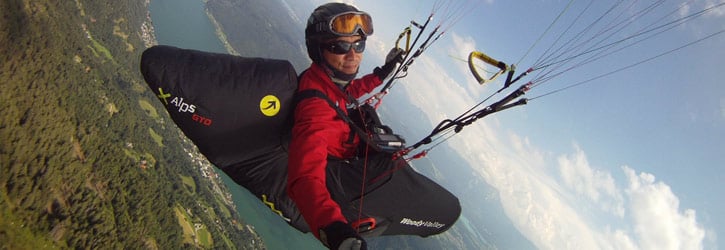
More resources
1. 50 Ways to Fly Better by Bruce Goldsmith
2. Mastering Paragliding by Kelly Farina
3. Cross Country Flying by Burkhard Martens
4. Performance Flying by Dennis Pagen
5. Secrets of Champions by Dennis Pagen
6. Competition Flying - Flybubble Blog
Warm Regards,
Yoshi Pasha
(currently #1 Paraglider In The Universe, according to my kids)
PS. You can find more helpful tips on Yoshi's blog.


